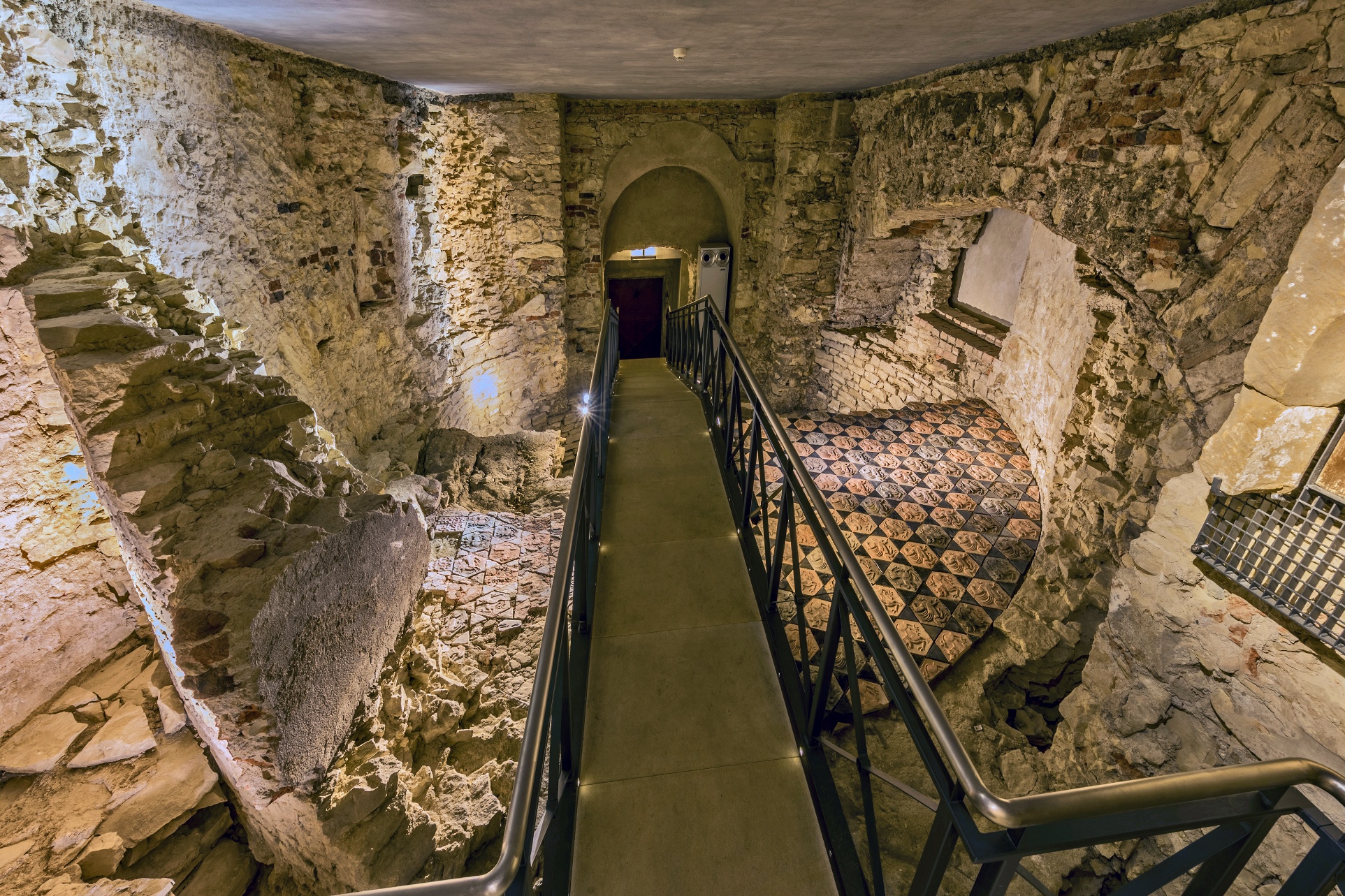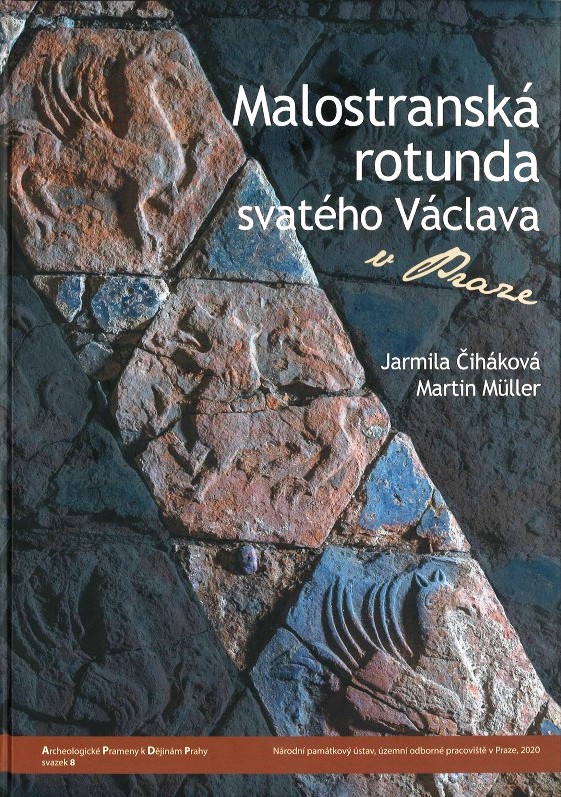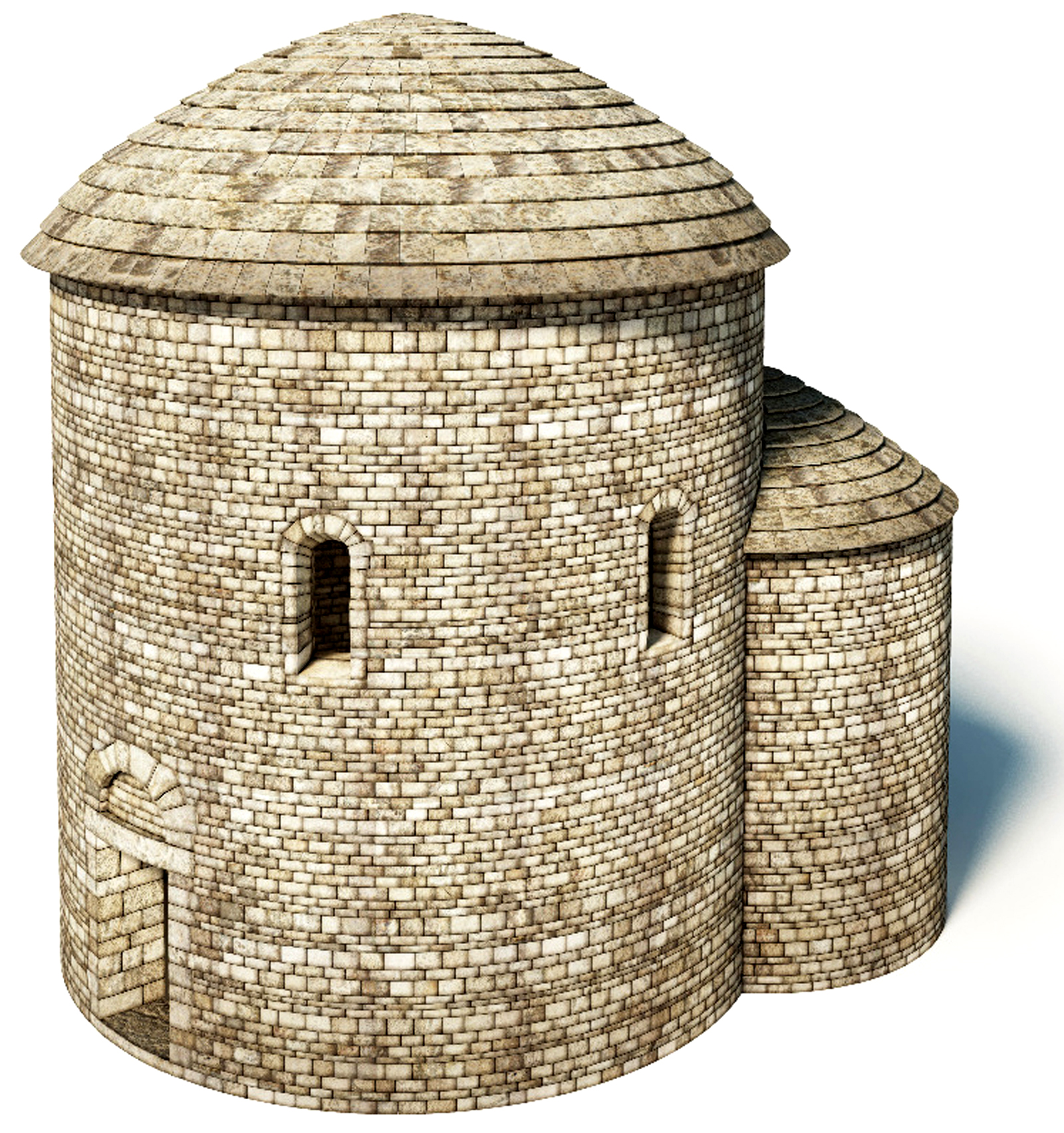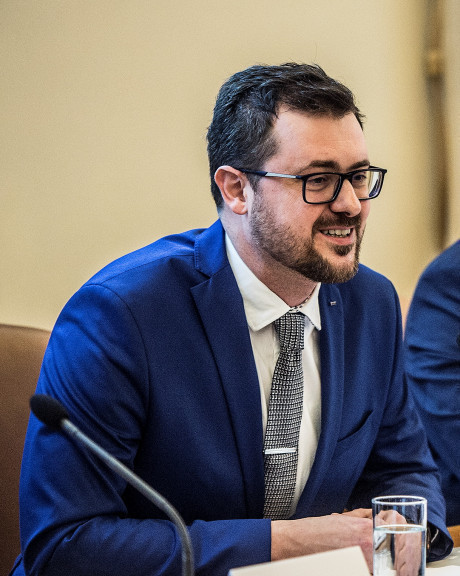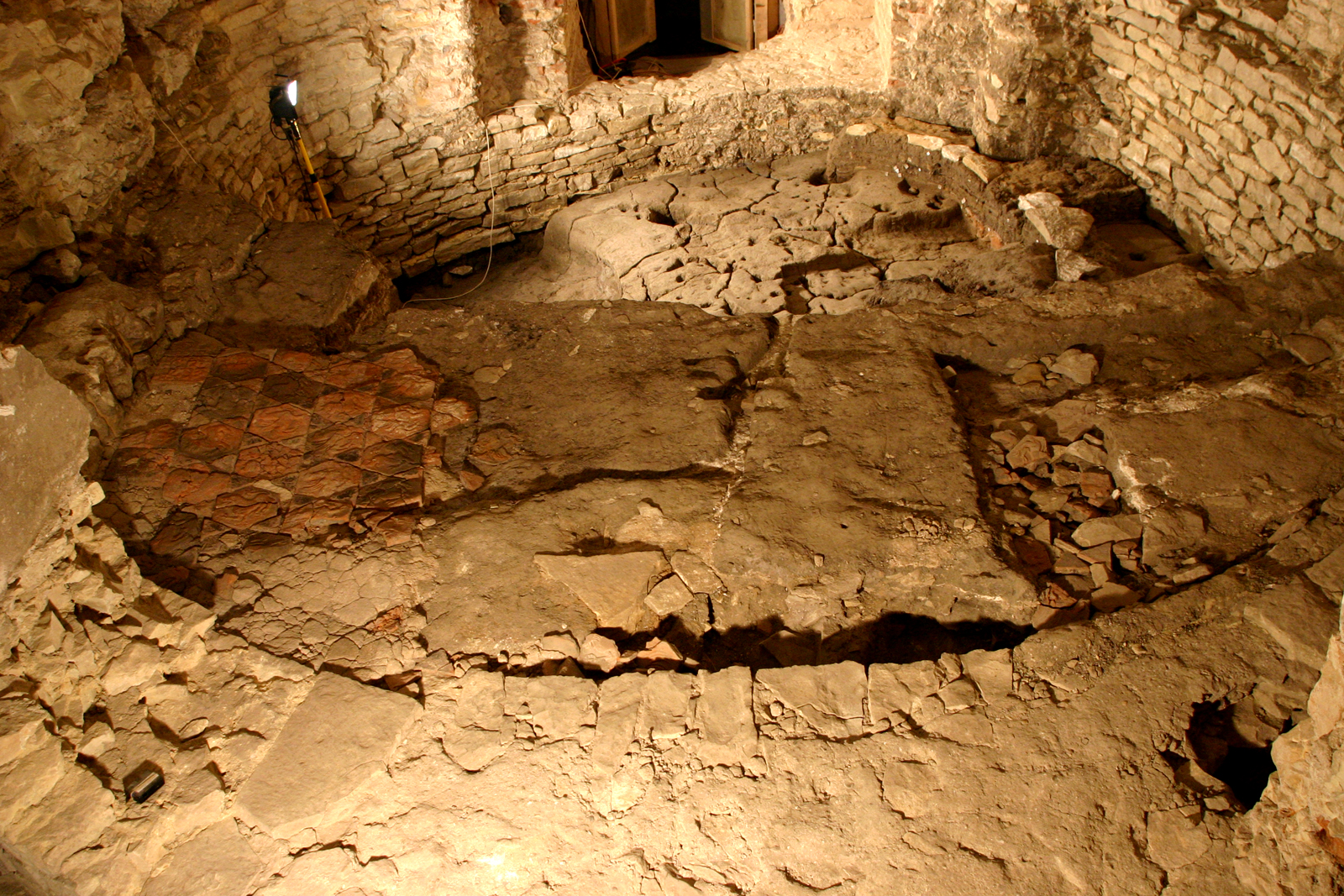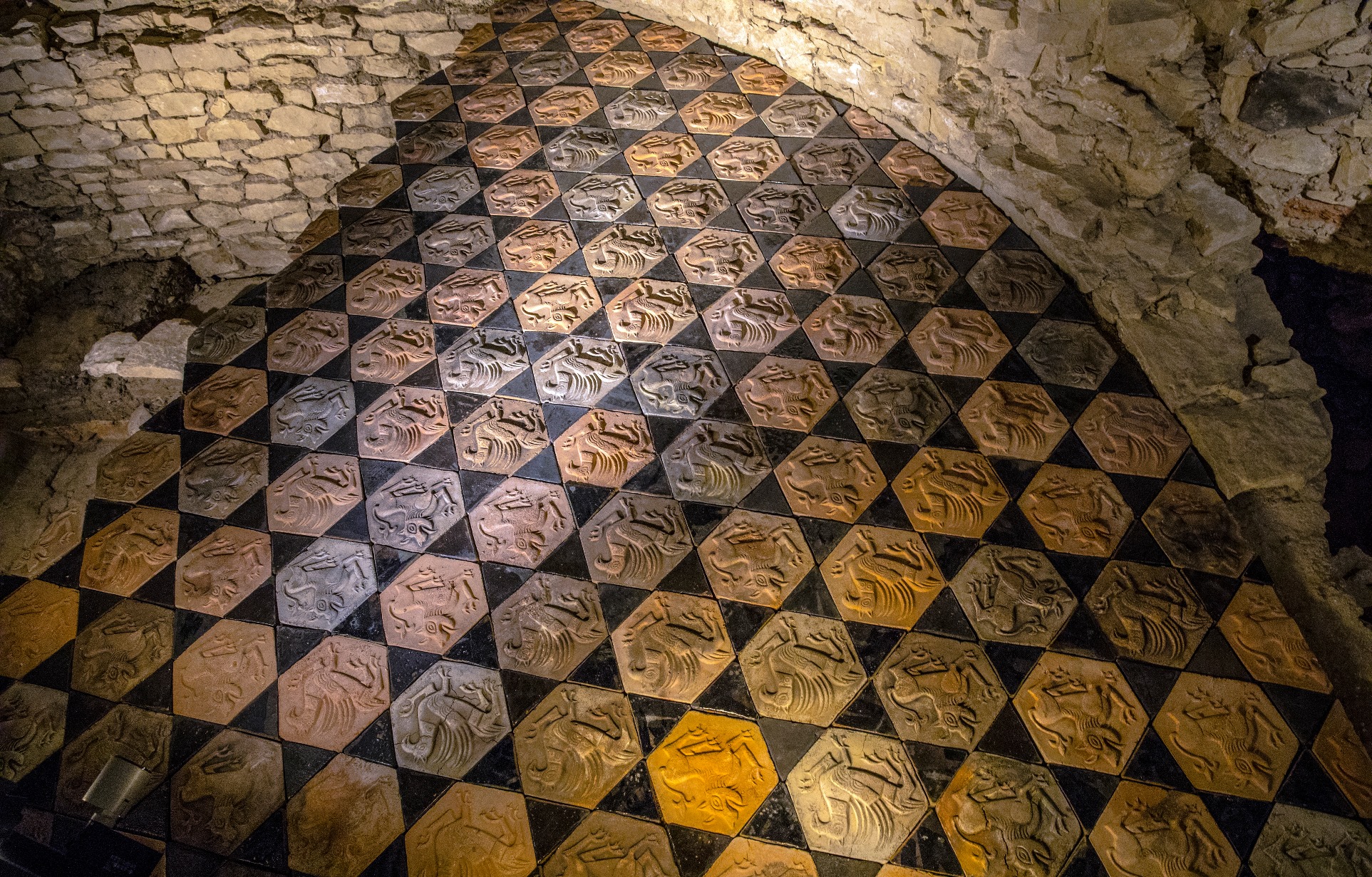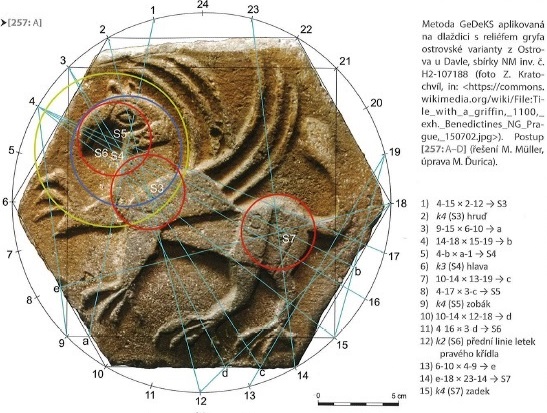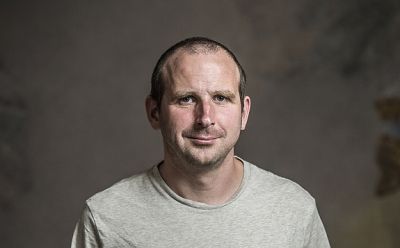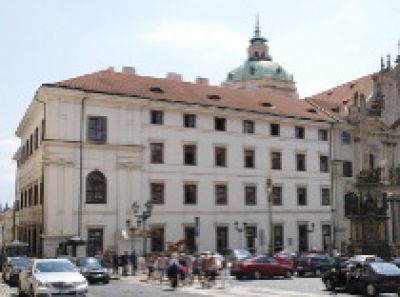A new book is providing a fascinating look at how teams of archaeologists, historians, restorers and mathematicians revived a unique rotunda from the 11th century (dedicated to the patron saint of Bohemia, St. Wenceslas). The book was edited by Jarmila Čiháková and Martin Müller and published by the Czech National Heritage Institute, which had worked closely on the restoration project with the Faculty of Mathematics and Physics at Charles University.
At more than 500 pages, Malostranská rotunda sv. Václava v Praze contains hundreds of images, photos, illustrations as well as diagrams, showing archaeological work as well as secrets of geometry that underlay not only the precise and original construction of the cylindrical building, but also of its decorative tiles. The rotunda is located in what today is Charles University’s Faculty of Mathematics and Physics (Malostranské náměstí 2) in Prague. “The perseverance, diligence and systematic nature of the archaeological work is astonishing,” says physicist Martin Vlach, the vice-dean for public relations at the Faculty of Mathematics and Physics. Vlach was in charge of the rotunda’s renovation, completed in 2016, as well as an accompanying exhibition about the site’s history and the incredible restoration process.
The exhibition opened was opened on 28 September 2016, the anniversary of St. Wenceslas’ death at the hands of his brother, Boleslav in 935 A. D. A key exhibit in the show was a diagram showing how replica tiles in the rotunda, extremely important as only around 4.7 % of the originals were preserved, were carefully calculated. The entire interdisciplinary team received the Europa Nostra award in June 2018 for their efforts in preserving this exquisite cultural heritage site.
Rediscovery
With the exception of a single legend (Ut annuncietur I.) from the first half of the 13th century, the first archival mention of the rotunda is a written record from 1309 from a priest name Henricus who administered site below Prague Castle in his day. The importance of the church gradually declined; in the 16th century it was filled with debris from a fire, and in 1612 the townspeople of Malá Strana (Prague’s historic Little Quarter) complained of an abundance of filth and stench in its vicinity, charging that the town should take better care of its landmarks… In 1628, it became the foundation for a new Baroque church, and later for the Jesuits’ “house of the professions”, where the faculty is currently found.
Scientists studying the history of the defunct shrine were helped by several period depictions dating back to the 17th century: a building with a typically domed roof stands out in particular among the spires of Malá Strana in the so-called Sadeler’s Great Prospectus of Prague, a copper engraving from 1606. Another tableau of what the former sacred site probably looked like is offered in other illustrations in The Passau Invasion of Prague (1611). And for comparison, a work by the famous painter Václav Hollar from August 1636, an overall view of Prague at the time seen from the slopes of Petřín hill, depicted the site in its later form: without its round roof and with a facade and sectioned church gable.
Ultimately the focus of the research was understandably and inevitably, in precise archaeological work. After the discovery of the circular crown of the former rotunda (3 February 2004), a finding was made on 17 March of the same year which greatly added to the scope and direction of the project – from research and preservation also to a new exhibition. Under layers of mortar, the researchers in situ revealed the first tiles of the Romanesque tiling of a so-called Vyšehrad type, which – as they soon discovered – formed a geometrically precisely laid floor. The faculty later decided on a careful restoration of the medieval monument.
The archaeologists and mathematicians gradually found they understood each other very well. A sophisticated comparison with other historic rotundas – the book’s authors analysed 28 buildings in detail, including the oldest in Budeč, Levý Hradec, Vyšehrad and at Říp Mountain – showed that none of them had proportions identical to the one in Malá Strana, but also that a deep knowledge of geometry and calculation was behind the creation of that sacred site. The floor plan was created on the foundations of a triangle and on precisely circumscribed circles – the Czech loket (0.5914 metres) was used as a unit of measure. It is no coincidence that this is exactly twice a Roman foot (0.2957 metres). Using period iconography, the book shows what medieval surveyors looked like – even with various compasses and rulers.
From the preserved and reconstructed sections, Čiháková and Müller’s team deduced that the rotunda of St. Václav in Prague used to be 11.3 metres high to the top of the roof, and that the outer diameter of the above-ground masonry of the nave and the apse was around 8.35 metres. Petr Hadrava of the Astronomical Institute of the Czech Academy of Sciences also took part in the research, dealing with the possibilities of deliberate orientation in the rotunda with respect to the four cardinal directions and the positions of the stars; he brought the perspective of archeoastronomy to the project.
Associate Professor Martin Vlach told Forum more about the restoration of the rotunda and the making of the book:
When did you and your colleagues in physics and mathematics learn that such a valuable historical monument lay on the premises?
I’d like to specify that the remains of the rotunda of St. Wenceslas are not found under the faculty building, as people often think, but are at the level of today’s ground floor, in one of the spaces that was inaccessible for hundreds of years. The Rotunda of St. Wenceslas originally stood on a prominent elevated site not far from one of the fords of the Vltava River; this hill later probably merged with the terrain of Malostranské náměstí – or the Little Quarter Square. Our faculty’s building also has several underground floors, but the rotunda is on its ground floor. The remains of this rare monument were discovered during the general reconstruction of the building in 2004.
You were deeply involved in the project, weren't you?
I became interested in the site in detail when I took up the position of vice-dean for PR, promisingDean Jan Kratochvíl over beer that we would reconstruct the rotunda, that it would truly be a third role for the university. Not just in words, but in deeds. Until then, the site had actually laid dormant for almost 10 years. At that time, however, I had no idea what I was signing up for (laughs). Years spent restoring the rotunda were beautiful but very demanding.
Describe what it was like for people from the Mathematics and Physics Faculty to cooperate closely with archaeologists.
Even though our worlds are completely different, I think we found common ground very quickly. Meetings like this of people from different fields are always beneficial and informative. After all, in contemporary scientific work, collaborations like these aren’t an exception, because interdisciplinary research often brings comprehensive and completely new perspectives and results.
In fact, it was a major experience for me. In my own work, I started to look for parallels to other fields and cooperation to see if there are any interesting intersections. However, we certainly taught the public about the history of the place, about the study of early Christian legends and, above all, about the methods of archaeological and restoration work. At the same time, one is best aware of how difficult it is to interpret and date the findings.
What interested you directly?
I personally admired the unbelievable diligence and systematic nature of the archaeological restoration work. On the other hand, the archaeologists were interested in some of our methods, even though they were not used as the main approaches. Specifically, this was only the second radiocarbon dating carried out in the Czech Republic to analyse mortar lime. By the way, there were three discovery situations in the rotunda where lime was separated: from the tile bed, as well as the core of the above-ground masonry of the rotunda. The third sample came from the construction site layer of the rotunda’s predecessor.
What fascinated you the most about the rotunda?
That’s not an easy question: the rotunda was literally our life for several years. To provide a bit of background on the most important things for historians – for example, that a space that connected with the time of St. Wenceslas was researched, and that the discovery site is very probably the oldest stone building outside Prague Castle – so the fascinating moment was probably the discovery of Pythagorean geometry not only with regard to the tiles, but also in clarifying the technology of Romanesque architecture in our Central European region.
This was probably what fate wanted: thanks to a detailed analysis of the dimensions of the rotunda found at the Faculty of Mathematics and Physics, it turned out that the dimensions of the circular construction from the 9th to 12th centuries were not random, but were built according to deep knowledge of ancient mathematics. Although the Rotunda of St. Wenceslas was fragmentarily preserved, it was found that the aspect ratios of the squares for the circles circumscribed (the outer part of the rotunda) and inscribed (the inner part of the rotunda) are 5:4:3:2 in the case of the apse and the nave. Subsequent analysis of other rotundas then showed a similar dependence. You can read more about the more complex beauties of geometry, for example, in tiles from the 11th century, in the book.
What else was surprising?
The second fascinating moment for me as a physicist, was another discovery from the analysis of the dimensions: The architects of the time, centuries ago, probably used a unit of measurement called the Czech loket. This was previously thought to be a somewhat younger unit of measurement - written sources, I suspect, document the year 1268. The unique European compatibility with the Roman foot, where one Czech loket equals two Roman feet, does not allow for the definition of an unambiguous time, but this discovery is an indirect proof of its, let’s say, considerable antiquity.
When was the decision taken to publish such an extensive book in cooperation with the National Heritage Institute? Was the Faculty of Mathematics and Physics involved financially?
The team talked about putting together a book from the very beginning. I think that Jarmila Čiháková, the co-discoverer of the Rotunda of St. Wenceslas and the main archaeologist on the project, had these ideas maybe even before the preservation project. The book is her work in concept and authorship, and of Martin Müller and their co-workers from the National Heritage Institute. I was more of the person who frequently asked how the book was going. As a whole, the faculty contributed part of the finances for its publication. I think that a monograph like this is the logical and inevitable result of extensive research, the results of which will be used possibly by the next generation of archaeologists and historians.
When I was with you on an excursion – and this was before the Covid era – you talked enthusiastically about the research and reconstruction, especially the tiles. What was the most difficult aspect of the project?
Without exaggeration, the administration associated with the project still seems to me to be the most difficult; the organisation of all the tenders and similar matters. The most absurd situation was when the National Heritage Institute was supposed to have won the tender [for doing the work]. Except that, by law, it is this institution that was already present at the discovery and a number of discoveries were in its possession at the time. At the time, we went to the Finance Ministry to request an exemption to the law on tenders.
That wasn’t successful, but we were lucky to have acquired a good law firm. I suspect we were the second or third instance in the Czech Republic to apply different selection criteria with different weighting. So it was just about not price and price alone, which was traditional in public tenders at the time. At the same time, everyone knew that such a single criterium was demagoguery. The people who were stakeholders worked very well, although it was necessary to lead a relatively large team – nearly a hundred people – at the time I had no experience with that. The strong qualifications of all the participants guaranteed that they would handle the technical problems and the reconstruction of ancient production processes. But the enthusiasm often ran into precisely those administrative barriers. I’m glad this is long over.
Back to the book: how well has it sold during the unfortunate period of the pandemic, when shops have been mostly closed and all sales have moved online?
The sale is primarily a matter for the National Heritage Institute, which published the book. But it is true that the offer of some of the books through our faculty e-shop at www.matfyzpress.cz exceeded our expectations because the title is essentially sold out. Apparently e-shops were not gravely affected by the current situation.


